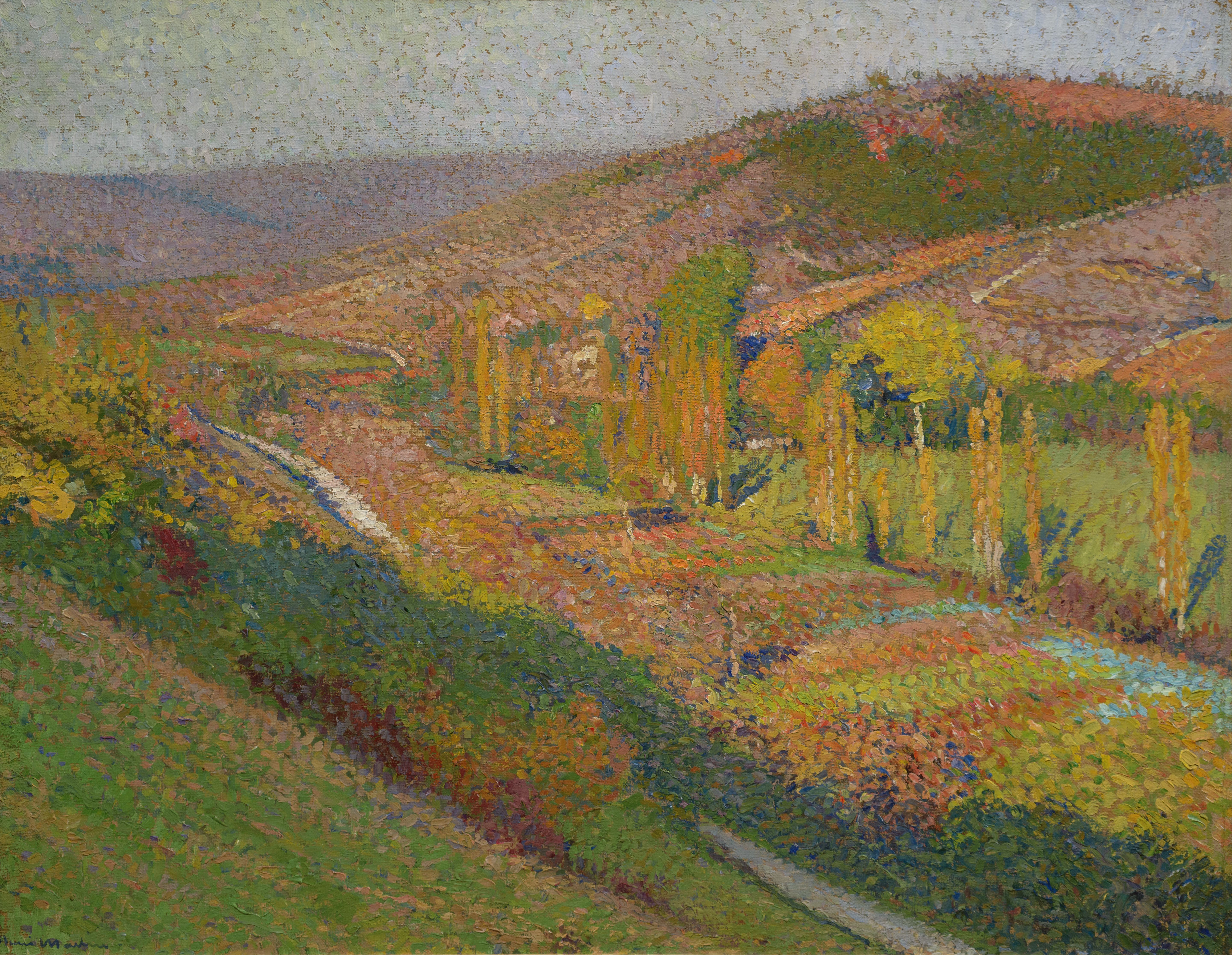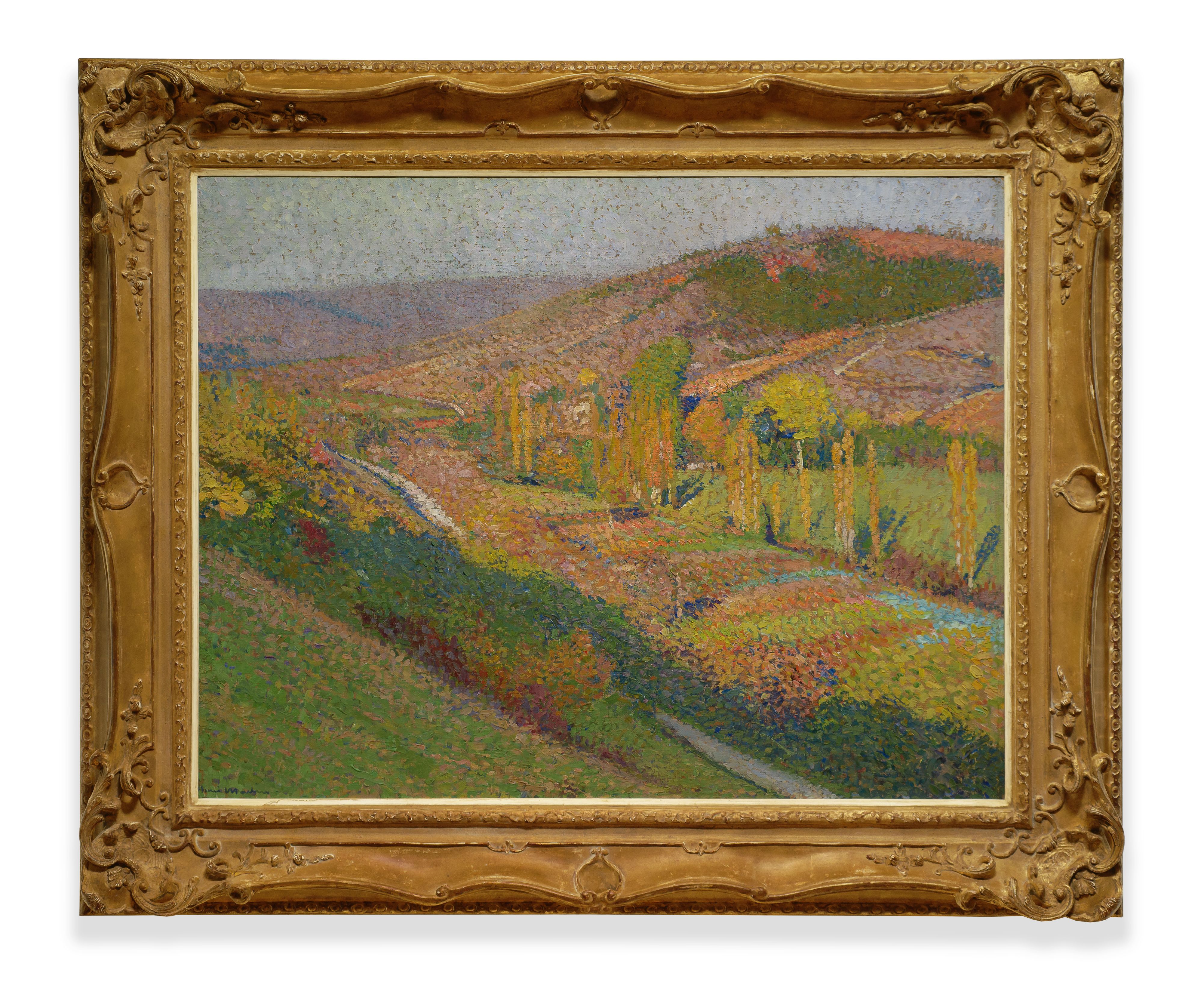H. (HENRI) MARTIN 1860 Toulouse (France) - 1943 La Bastide-du-Vert (France) La Vallée de Labastide-du-Vert
Oil / Canvas: 73 x 92,5 cm
- This artwork can be viewed in our gallery
- Call us for more information: +31 26 361 1876
- World wide shipping available
Width: 92,5 cm
Private collection U.S.A.
Kunstgalerij Albricht, Velp, The Netherlands, 1998
Private collection The Netherlands, 1999
Private collection, Cannes, France, 2008
Cyrille Martin has kindly confirmed the authenticity of this work
This work is included in the Catalogue raisonné of Henri Martin by Marie-Anne Destrebecq-Martin
Over H. (HENRI) MARTIN
At the age of 17 Henri Martin entered the Ecole des Beaux –Arts in Toulouse and already at the age of 20 his work was accepted at The Salon des Arts Français. 3 years later again, in 1883 he won his first gold medal at the Salon. But it is in 1900 that Martin’s career moved into a phase for which he is now famous. It was in this year Martin bought a large 17th century old farmhouse in the village of Labastide-du-Vert, in the department of the Lot, in the south-west of France. He named the house “Marquayrol”. Surrounded by a beautiful garden and overlooking the village and the valleys where tall poplars stood distributed throughout the prairies, the house and landscape provided much of the subject matter for the years to come. Henri Martin was a symbolist, a painter of murals, but above all an Impressionist and it is in this oeuvre that his reputation lies. In this painting Martin strongly projects a visible influence of Pointillism. A close quarters Divisionism of colours is clearly visible: un-mixed colours are painted closely next to each other to disintegrate the form. From a distance this technique softens the subject and gives Martin the possibility to project the interplay of light and shadows on objects. Martin is a true painter of southern France. His paintings, particularly those of Marquayrol, reflect the clarity of light and the vivid colouring of the south.

